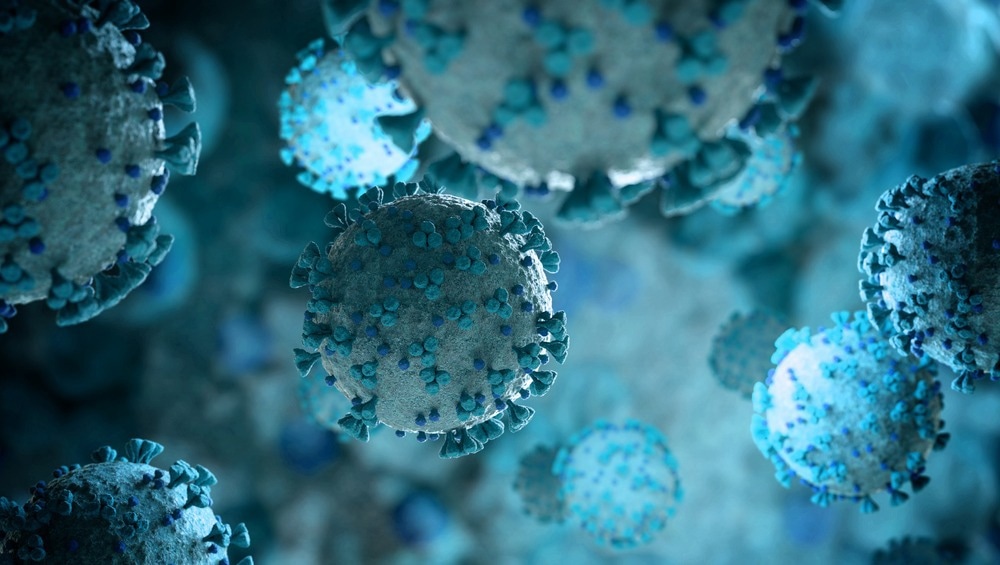In a recent study posted to the bioRxiv* preprint server, researchers developed an epidemiological model to simulate the co-circulation of severe acute respiratory syndrome coronavirus 2 (SARS-CoV-2) and multidrug-resistant bacteria (MRB) in healthcare facilities during the early phase of the coronavirus disease 2019 (COVID-19) pandemic.
 Study: Collateral impacts of pandemic COVID-19 drive the nosocomial spread of antibiotic resistance. Image Credit: sdecoret/Shutterstock
Study: Collateral impacts of pandemic COVID-19 drive the nosocomial spread of antibiotic resistance. Image Credit: sdecoret/Shutterstock

 *Important notice: bioRxiv publishes preliminary scientific reports that are not peer-reviewed and, therefore, should not be regarded as conclusive, guide clinical practice/health-related behavior, or treated as established information.
*Important notice: bioRxiv publishes preliminary scientific reports that are not peer-reviewed and, therefore, should not be regarded as conclusive, guide clinical practice/health-related behavior, or treated as established information.
Background
Moreover, antibiotic resistance is a leading cause of morbidity and mortality worldwide, and the COVID-19 pandemic has impacted the epidemiology of several invasive bacterial diseases. Yet, studies have barely explored the impact of the COVID-19 pandemic on the transmission and control of antibiotic-resistant bacteria.
About the study
In the present study, researchers used a mathematical model to quantify the epidemiological dynamics of antibiotic resistance based on SARS-CoV-2 outbreaks and corresponding COVID-19 responses. They explored how a surge in COVID-19 cases may lead to conditions favorable for the proliferation of MRBs, including disorganization of patient care, increased demand on healthcare workers, and abandonment of antibiotic stewardship programs.
Furthermore, they explored how the reinforcement of SARS-CoV-2 infection prevention and control (IPC) measures, social distancing, patient lockdown, adherence to hand hygiene protocols, and use of sanitizers could help prevent bacterial transmission.
The study model described bacterial infection among patients, healthcare workers (HCWs), and between the two in a healthcare setting. Further, it showed bacterial colonization in patients with antibiotic-sensitive or antibiotic-resistant bacterial strains. It is noteworthy that HCWs transiently carry commensal bacteria and serve as vectors for patient colonization. While bacterial infection in HCWs is cleared if they maintain hand hygiene, patients require antibiotics for the same.
The study model incorporated 10 COVID-19 response parameters (τ) in ordinary differential equations (ODEs), each reflecting how SARS-CoV-2 outbreaks impacted the organization of healthcare settings and patient care. The researchers classified each response as a policy response or a caseload response; the former was enacted during SARS-CoV-2 outbreaks to limit viral transmissions, and the latter unwillingly resulted from surges in COVID-19 patients or HCW infections. The researchers used two sets of probabilistic Monte Carlo simulations to account for extensive τ uncertainty, which reflected heterogeneity across different types of bacteria and healthcare facilities.
Results
The simulations tailored to an early pandemic context showed that combined COVID-19 responses (τ=0.5) resulted in an average 88.1% reduction in total nosocomial SARS-CoV-2 infection incidence across all infection routes. However, it had a heterogeneous impact on MRB epidemiology. The authors also observed that patients in healthcare facilities enacting more effective COVID-19 IPC measures were less likely to experience MRB colonization and experienced lower rates of resistance than patients in facilities inundated by COVID-19 cases.
The cumulative number of patient days colonized with MRBs decreased by 13.2% with policy responses but increased by 6.3% with caseload responses. Likewise, MRB colonization incidence decreased by 28.2% with policy responses but increased by 13.8% with caseload responses. Conversely, policy responses had little impact on the average resistance rate, while caseload responses led to a mean 10.4% increase.
Conclusion
The unprecedented spread of SARS-CoV-2 worldwide shocked the healthcare system in early 2020, revealing their inadequacy to detect and control yet to emerge pathogens with the potential to create a pandemic. This revelation highlighted the need for global investment in pandemic preparedness to bring changes in international law and governance.
The current review showed that pandemic preparedness initiatives would also mitigate the spread of MRBs, establishing it as a collateral benefit of robust pandemic preparedness. Other public health strategies for preventing SARS-CoV-2 transmission in healthcare settings, including vaccination and mass testing, could also help alleviate the spread of MRBs.
Future studies should also use mathematical modeling to quantify mechanistic links between COVID-19 and antibiotic resistance beyond the early pandemic context. Further, these studies should evaluate similar impacts across other settings (e.g., retirement homes, prisons).
The public health authorities repurposed antimicrobial resistance infrastructure for SARS-CoV-2 testing and surveillance as the COVID-19 pandemic began, which resulted in a delay in the reporting of antimicrobial resistance data. After the initial international surge in antibiotic consumption in March 2020, studies estimated a 19% reduction in global antimicrobial consumption from April to August 2020 relative to 2019. Therefore, future studies should understand the impact of COVID-19 on antibiotic resistance and modified antibiotic consumption in community settings.
Conclusion
The study showed that the IPC policies limited nosocomial MRB transmission (e.g., Pseudomonas aeruginosa, Acinetobacter baumannii, Enterobacter spp.) during the COVID-19 pandemic could help mitigate selection for antibiotic resistance. Therefore, global investments in pandemic preparedness initiatives would also help combat antibiotic resistance.

 *Important notice: bioRxiv publishes preliminary scientific reports that are not peer-reviewed and, therefore, should not be regarded as conclusive, guide clinical practice/health-related behavior, or treated as established information.
*Important notice: bioRxiv publishes preliminary scientific reports that are not peer-reviewed and, therefore, should not be regarded as conclusive, guide clinical practice/health-related behavior, or treated as established information.